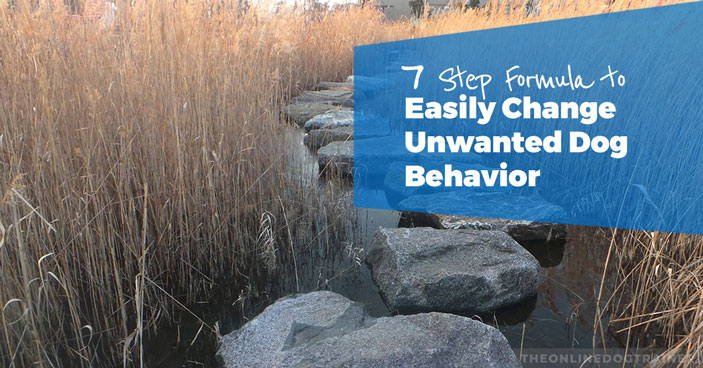
Over the years, I’ve worked with dogs with all sorts of issues. From obsessively chasing flies and charging towards other dogs to snapping at the postman or refusing to come when called…
I’ve seen it all and throughout these experiences, I’ve noticed there are certain key steps that I follow every time I begin the training stage with a dog. They’re like stepping stones. There’s a start point and then specific steps that take us to the place that we want to end up.
These simple but powerful stages are what I’ve based my 7-Step Dog Training Formula on–a routine that has become an important part of many of my consultations.
Time and time again, this formula has proven to be a successful way to help dogs calm down while shaping behavior.
If there is a dog that you’re having a difficult time training, I have great news for you.
Today, I’m going to be sharing my 7-step formula so you too will have success while working with your dog at home or out in public.
Follow these 7 key steps and you’ll have a much easier time putting an end to your dog’s unwanted behaviors.
Step 1 – Find the Starting Point
The hardest part of dog training is often figuring out how to get started. In fact, that’s a big reason why so many people struggle to curb their pet’s destructive behaviors.
For me, I’ve discovered that the most effective starting point is calming your dog and setting up the easiest situation for him to relax. It’s like anything in life…start on the lowest setting.
Until your dog is in a calm head space, there’s not much you can do to help inspire him to change his behavior.
So, to complete this first step, you may need to remove your dog from whatever factor (bike on the street or kids playing in the yard) that’s causing him to get upset.
There are many different ways you can do this including:
- Blocking your dog's view by putting yourself in front of the dog.
- Moving your dog in front of a parked car or tree if you’re outside.
- Bringing your dog inside to get away from the irritant.
- Moving to the back of the house where the sound is less obvious.
- Moving further away from the factor(you may have to start on the other side of the park).
Once you’ve removed your dog from whatever situation is causing him stress, you can use a technique that I call the Calm Freeze to relax your dog.
Simply hold your dog under the collar and sit with him until he begins to relax.
It’s important that you ignore your dog–no talking, petting, or eye contact. Just transfer your calm energy, and once your dog relaxes, let go of him and move to step 2.
It may take a few tries before your dog completely relaxes. That’s ok…repeat the Calm Freeze until your dog has settled down.
Step 2 – Once Calm, Ask Your Dog for a New Behavior
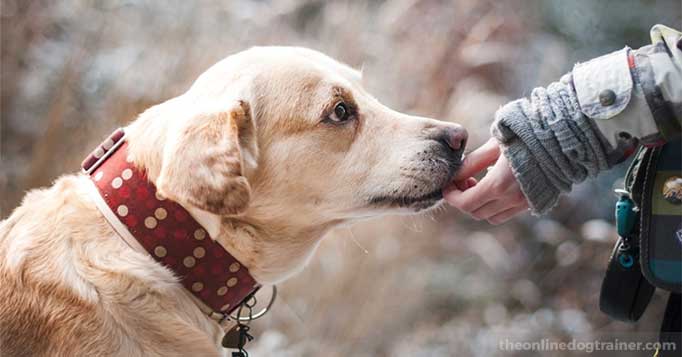
Once you’ve calmed your dog down, you may ask her for the behavior you’re looking for.
For example: If your dog’s chasing flies in the front room, getting her to calm down in the back room and then asking her to relax and lie down would be a great goal.
This step often entails replacing a dog's old behavior (running around and chasing flies) with a new one (lying down calmly).
So, to start you may need to involve distractions such as treats, a ball, pats, or cuddles just to distract your dog’s mind before she begins to relax totally on her own.
It’s even possible that in order to maintain control of the situation, you’ll have to use some sort of lead since your dog is not able to listen and respond through self-control yet.
This is ok.
Do whatever you need to do in order to relax your dog and get her focused on a new behavior, and then see if she will just relax on her own.
Treats and some simple sit down and stay commands can often work wonders.
Step 3 – Repeat Step 2 Many Times
Repeat step 2–removing your dog from a situation and calming him by redirecting him into a new behavior–until you get the dog behavior you desire.
Be sure to keep this process simple and don’t rush things.
When you repeat step #2, you’re creating a new pathway in your dog’s brain. The more time you spend creating this new pathway, the faster your dog's brain will understand “this is the normal way.”
Eventually, it will become his natural behavior.
Step 4 – Finish on a High
Before you finish the exercise from step #3 with your dog, it’s important to ensure you end on a high or positive note.
Here’s an example of ending on a high…
You remove Sparky from the front room where she is chasing flies into the back room. When you take her to the back room, she lies down on command and relaxes.
The energy you finish the exercise with is a lasting memory for your dog. You want this his memory to be the new calm behavior.
This step is important, so don’t forget it.
Step 5 – Repeat Behavior Again Later That Day/Next Day
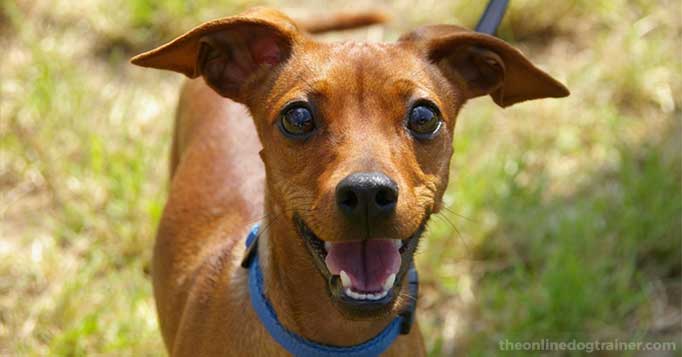
Repetition is the mother of all skills. It’s especially true when you’re working to shape dog behavior patterns.
If you finished on a high the day before, it shouldn't be too tricky for your dog to pick up where she left off.
Before you ask your dog to repeat the behavior, make sure you go back to step #1 and find the calm starting point.
Here’s an extra dog training tip…
The shorter the time between repetitions, the more likely you’ll find success. It’s also important to ensure the factors (like bringing your dog to the same room, asking her for the same command, etc.) stay the same from day to day.
If you change too many factors while training, your dog might get confused. This makes it harder on your dog to recall how she should behave in that specific situation.
Here’s a good example to paint a picture of what I’m saying…
Let’s pretend every time your dog walks past people he gets excited and anxious.
To help fix this problem, you did an exercise with your dog early on a Sunday morning outside a school when nobody is around.
Then, the next day, you take your dog on a walk to the exact same school, but now it’s at 9 a.m. on a Monday morning and kids are everywhere.
Too many factors in the environment have changed. Because there is so much change, your dog is going to have a much harder time remembering what you worked on the day before.
Not good.
Step 6 – Change One Variable and Make It a Tiny Bit Harder
Eventually, you’re going to have to change up the variables in your dog's environment to teach him how to appropriately act in various types of settings.
Once your dog is responding well in the controlled environment you created (walking him Sunday morning outdoors when no one is around), you can start changing the variables.
Please be cautious though.
You must do this very slowly. And whatever you do, don’t rush it!
Let’s go back to the dog-walking example.
If you decide to take your dog (who gets excited and anxious when walking around people) out for a stroll on a day that school is in session and kids are running around, start by walking your dog on the opposite side of the street.
This allows your dog to see what’s going on, without being too close to all of the excitement.
Please recognize that when you change variables and make things harder for your dog, he may behave differently.
Eventually, you’ll get to a point where you change different variables slowly while maintaining your dog's calm mental state.
Step 7 – If Your Dog Becomes Stressed, Go Back to Step 1
If your dog is stressing out over the variable changes you are making, you simply need to go back to step #1, the place where you can get your dog to calm down.
After a while, your dog will learn to calm down quicker, allowing you to make it through the remaining steps more successfully.
The chances are that just as in life, some days you will be surprised at what happens…it may be what you hoped for and other times it may not. Just don’t look too much into it, learn from it and get back on the horse!
Keep at it and I know you’ll be able to help shape your dog's behavior in a positive way over time!
If you’re interested in checking out more of my dog training tips, I encourage you to request access to my FREE video series, The Easy Way To An Obedient Dog…
>> Get FREE access to the videos now.
Have a great training day!
Or, if you're looking for a solid training program to follow, I invite you to check out my program called The Dog Calming Code! Or, if you have a puppy get started first with my Puppy Coach training program!
This program will give you all the info you need to get your pup to listen and respond to you when it matters most!

~Doggy Dan 🙂

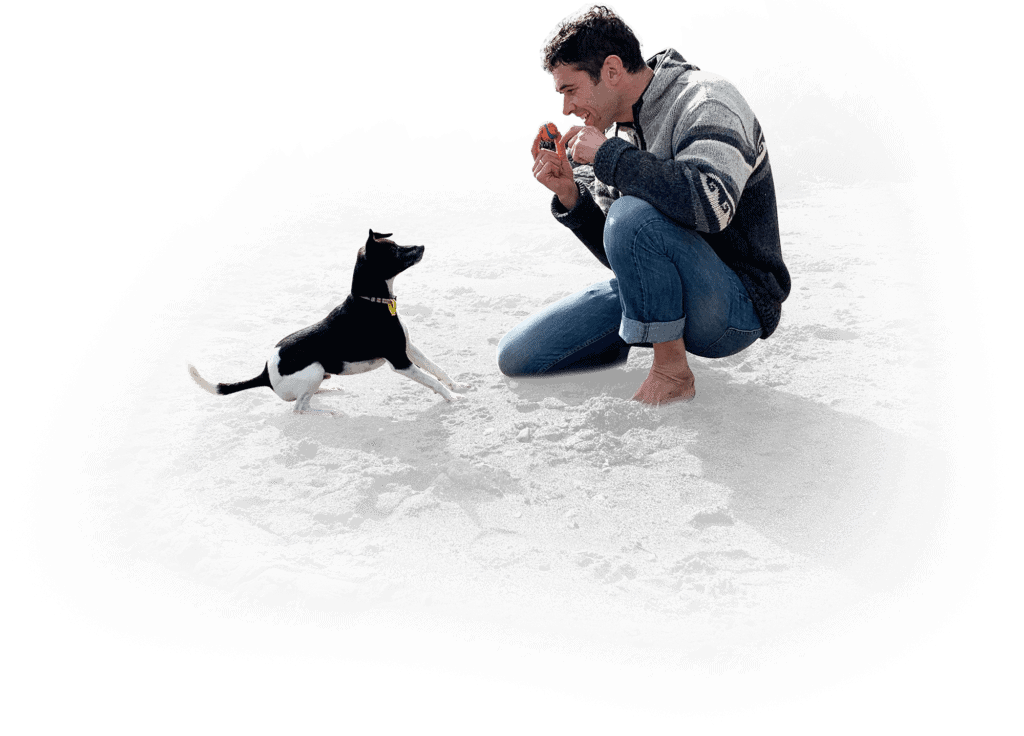
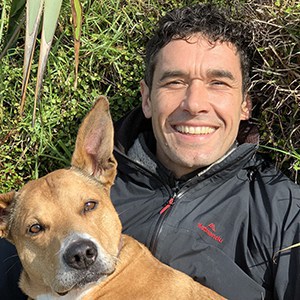

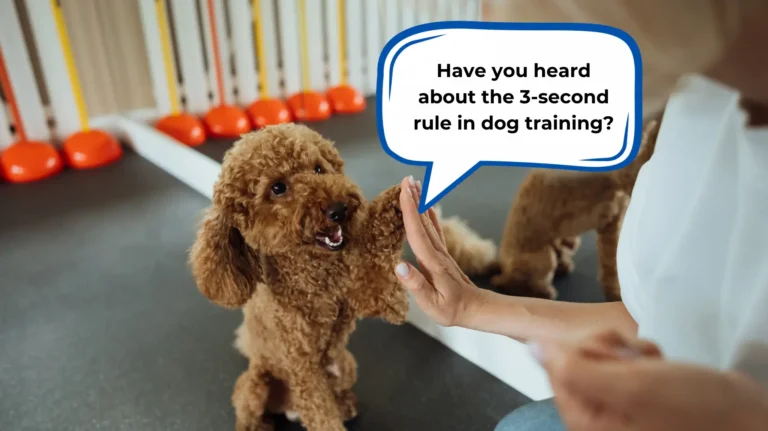
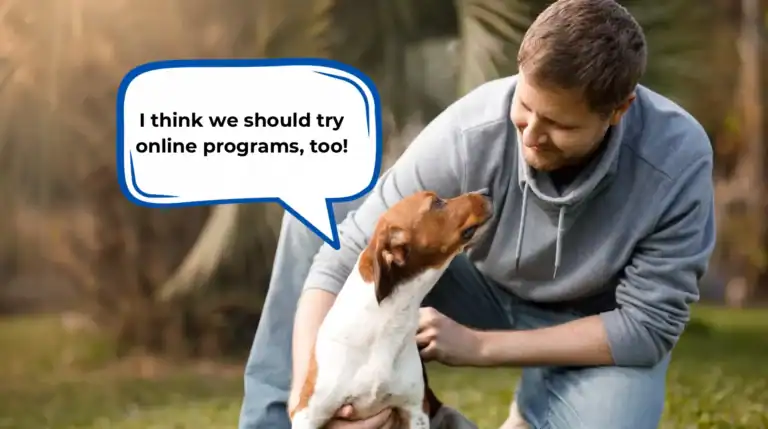
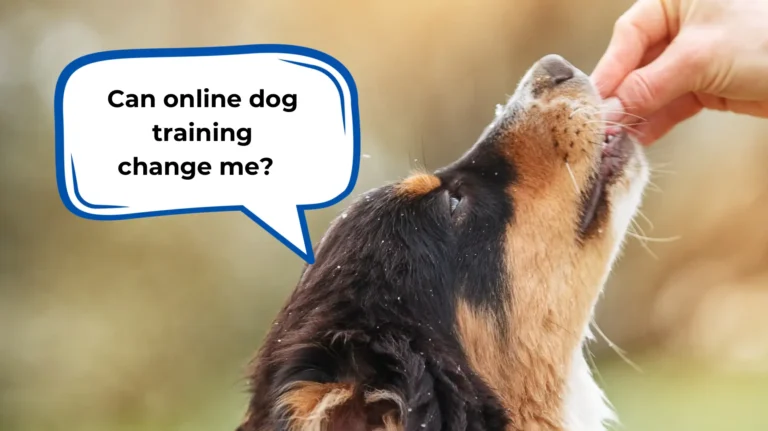
14 Responses
I have a lovely border collie, but we have a problem when we go to agility. As soon as he hears the first command from another handler, he goes beserk and shrieks and screams until they have finished. As soon as it is his turn, he is completely quiet. This causes problems as we have our classes in a field near to houses and we are going to get complaints about it. The only other time he reacts like this is if he sees a cat or fox. I really want to help him calm down in these two situations. The agility issue is just annoying, but in the cat/fox scenario he could get himself killed as he focuses completely on the cat and if it runs into the road, he follows it! He does come back when called, but if he sees the cat and I don’t he is gone before I can stop him and that really scares me.
Thank you
Al
Hi Ali. One of the thing that can be really helpful in calming a dog who is high level excited is to calmly hold them still by the collar in what we refer to as a Calm Freeze. It’s best not to say anything or make eye contact, actions speak louder than words here, and keeping your interactions to a minimum is important. It’s really tempting to tell the dog off or give them a command but in this scenario they are just not in the head-space to listen and it will all fall on deaf ears. If your dog is really wound up though, moving him away from the other handler and walking in a few square metres, changing directions often, can be a really helpful thing to calm and re-focus a dog. Best…Doggy Dan
HI Dan,
Love reading about training your dog. Our dog is an 8 year old jack Russell – rescue dog, who had 5 owners before us. We love him dearly and have had him for 6 years – he is now 8, but he has a very unfortunate problem. When we go out, we put him on the veranda. We leave him food in a food ball and water.
He literally screams when we close the glass doors and throws himself against the glass.
As soon as we are in the car he stops.
Unfortunately he does not play with toys except a ball which we give him a game before leaving and about 5 games during the day..
We need help – what to do.
Regards
Wendy Leahy
Hi Wendy,
This sounds like a classic case of Separation Anxiety and is something we cover in detail on my Membership Website. Using treats and toys often won;t distract a dog from it;s sense of responsibility, and that is what causes separation anxiety in all dogs. They feel responsible for the safety and survival of their family and when they are left alone at home they feel incredibly stressed about the fact that they are unable to perform that role. It’s kind of like the parent of a toddler worrying about them when they are lost, frantic is a word that springs to mind. My website TheOnlineDogTrainer.com shows you very clearly how to overcome this behaviour…maybe take a quick look…its a $1 trial for 3 days…all the best Doggy Dan
Hi Dan, I think one of the best things about your training instructions is how excited I always am to start putting them in place. I guess that’s because they are clear and simple steps, that I know I can manage; and they make so much sense, that I’m confident I’m going to get a great result with my dog. Thank you! What I would like to know is, how to best manage one dog at a time when I have two boys displaying bad behaviour? Only one of them is really the problem. I know the second boy is just feeding off the other one’s energy. How do isolate and train the “naughty” dog without making the “good” dog feel like he’s being punished or being put in a “time out”? Am I missing something obvious? Cheers, Sharn.
Hi Sharn,
you are welcome. Thanks for your kind words. I think you may be missing the fact that if you step in really early and calmly use timeout for the dog who is the main instigator and just use a very short timeout it will dissipate the rising issue very quickly…give that a go. I think you’ll find that both dogs understand where you are coming from 🙂
Cheers Dan
6 year old rescue with us 15 months, 40 lb. Jack Russell/ black lab mix. Sits on or by me as much as possible. Outside, barks at every dog, person, car, leaf, shadow. Neighborhood has many dogs on leash, fenced or electric fences. I think he is trying to
protect me every time he goes out, always on 6 foot leash. He’s so strong and pulls me. I can’t correct him. Try to stay calm. At my wit’s end. Came from living with both parents and 2 litters of siblings in 3 acre fenced yard, with free reign. Was never on leash. HELP!!!
Hi Deanna,
This all sounds a bit frustrating and overwhelming for you, but it is even more so for dog. Imagine feeling responsible for the survival/safety of your human pack and you had to do that job in a world you do not understand. Anything that is man-made is completely alien to dogs and they can over-react to the slightest thing out of sheer panic. The solution is to show your dog that it’s your job to make the decisions that keep the pack/family safe and they don’t have to worry about anything other than following your lead. The behaviours you mentioned are all common for a dog who believes they are the decision maker/leader. So you can change these behaviours if you wish to and give your dog the ability to relax and trust you to look after everyone. Best, Dan
Hi Dan. Can’t tell you how much your videos have helped me. I recently have been working on whistle training from your video, and have a question that relates to this post. Following your directions, everything works like a charm (it’s automatic) if we’re in a space that doesn’t have too much action and she’s more or less calm, just exploring. But when we go to the dog park, and she’s playing chase or getting worked up; also, if she knows there’s food somewhere and wants to go after it, the whistle doesn’t work anymore, she won’t listen then. It’s hard to train this because you can’t exactly put her in time out at a dog park or out in an open area (or can you?). I’m frustrated and don’t know how to correct the behavior so she listens no matter how intense the situation. Any advice?
Hi John, thanks for the positive feedback and glad you are enjoying the whistle and training http://theonlinedogtrainer.com/whistle-dvd-lanyard-special-offer/
My suggestion is this…set yourself and your dog up to win…so if you KNOW she isn’t going to come then don’t blow the whistle. You have to see it like lifting weights – you need to build up to the heavy weights so start small and easy. Is you want to do the equivalent of a timeout at the park you can always take away her freedom by putting her on the lead…usually works very well, (just for a minute or two, then release her) Hope that helps, regards Doggy Dan 🙂
My golden retriever whines uncontrollably when she first gets up in the morning and gets around me, she’s so excited to see me. I hate to not pet her, but the whining is incessant until she’s fed. Same thing happens when she’s been in her pen and I come home and get her out. She’s like a wild dog that can’t be calmed, but I have to let her out of her pen! How to calm her when I can’t separate her from her source of whining (me). I’ve tried long, calm strokes and ignoring her (so sad). What to do?
Hi Laurie, when dogs meet they clock in as either a leader or a follower…this is true when they meet dogs at the park and when they meet humans. There is usually no aggression or dominance involved and its not wrong, its just nature, they are pack animals as opposed to a shoal of fish where every fish is equal. The way you meet and greet your dog is crucial to how every other part of your training goes. Its hard to explain the complexity of what to do (which is why I spent so long filming it all) but basically you really need to ignore her until she is relaxed. The same applies with the feeding, you don’t want to be rewarding an over excited, whining, anxious dog or you are rewarding the unwanted behavior. If you really want to get on top of things check out http://theonlinedogtrainer.com and follow the 5 golden rules. I am pretty sure that they will transform her based on similar dogs I’ve worked with. Regards Dan
Hi Dan. These are really clear instructions, thanks so much for sharing this with us! A big help for moulding our new puppy at home.
I have a question where I’m a bit stuck. Our dog (7 months old) gets excited when playing and “mouths” us. She also bites our good soccer ball when playing. I don’t want to stop her playing ie running around with my son/chasing ball etc – just the mouthing/biting. I’m not sure, How would you just change this one part of her behaviour?
Hi Natasha, you are welcome, thanks for your kind words. The “training part” to stop the mouthing is pretty simple. As soon as your dog touches you or your clothes with teeth take her calmly and put her into timeout. Couple of minutes should do the trick, then let her out and ignore her. A puppy over 16 weeks should no longer see “play mouthing” as a game. Its the same as letting your 3 year old child mouth other kids gently is not a good idea. The bigger picture however is that a clear foundation about who is in charge and who is the decision maker will make all the future training easier and more effective. So I can’t urge you enough to check out my complete training program for $1 http://theonlinedogtrainer.com
All the best whatever you chose to do 🙂